Related Research Articles
Kaonde (kiiKaonde) is a Bantu language spoken primarily in Zambia but also in the Democratic Republic of the Congo. Kaonde and its dialects are spoken and understood by perhaps 350,000 people or more.
Kikuyu or Gikuyu is a Bantu language spoken by the Gĩkũyũ (Agĩkũyũ) of Kenya. Kikuyu is mainly spoken in the area between Nyeri, Nairobi and Nakuru. The Kikuyu people usually identify their lands by the surrounding mountain ranges in Central Kenya, including Mount Kenya, which they call Kĩrĩnyaga.
The Nubi language is a Sudanese Arabic-based creole language spoken in Uganda around Bombo, and in Kenya around Kibera, by the Ugandan Nubians, many of whom are descendants of Emin Pasha's Sudanese soldiers who were settled there by the British colonial administration. It was spoken by about 15,000 people in Uganda in 1991, and an estimated 10,000 in Kenya; another source estimates about 50,000 speakers as of 2001. 90% of the lexicon derives from Arabic, but the grammar has been simplified, as has the sound system. Nairobi has the greatest concentration of Nubi speakers. Nubi has the prefixing, suffixing and compounding processes also present in Arabic.
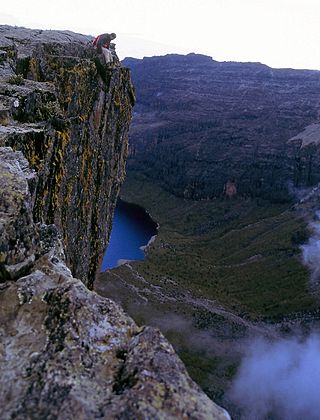
Meru County is one of the 47 counties of Kenya located in the former Eastern Province. It borders Isiolo County to the north, Tharaka-Nithi County to the South, Nyeri County to the southwest and Laikipia County to the west. Meru County has a population of 1.35 million people. It is home to the Meru people.
Kitui is a town and capital of Kitui County in Kenya, 185 kilometres east of Nairobi and 105 kilometres east of Machakos. it covers an area approximately 30,496.4 km squares and lies between latitudes 0°10 South and 3°0 South and longitudes 37°50 East and 39°0 East. It borders seven counties i.e. Machakos and Makueni counties to the west, Tana River County to the east and south-east, Taita Taveta County to the south, Embu to the north-west, and Tharaka-Nithi and Meru counties to the north. Kitui became the headquarters of Kitui County after the adoption of the new constitution and coming into effect of devolved governments.

The Meru or Amîîrú are a Bantu ethnic group that inhabit the Meru region of Kenya. The region is situated on the fertile lands of the north and eastern slopes of Mount Kenya in the former Eastern Province.
Meru North District was an unconstitutionally created district of Kenya, located in that country's Eastern Province. In 1992, it was split from Meru District, along with Meru Central District, Meru South District (Nithi), and Tharaka District. Since the High Court's decision in September 2009, the territory of Meru North has been part of Meru County.
Meru South District, also known as Nithi District, was an unconstitutionally created district of Kenya, located in the country's Eastern Province. In 1992, it was split from the large Meru District, along with Meru Central District, Meru North District, and Tharaka District. In September 2009, the Supreme Court ruled that its creation was unconstitutional, and that it belonged in Tharaka-Nithi District.
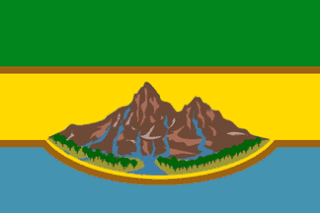
Tharaka-Nithi County is one of the 47 counties of Kenya. It was created from Kenya's Eastern Province. The county has an area of 2609 km2 and as of the 2019 census a population of 393,177.It is home to the Meru people.
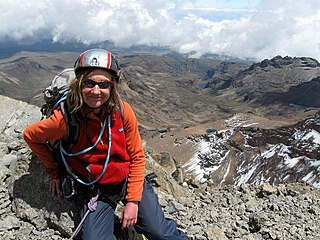
Chogoria is a town located in Mwimbi Division of Tharaka-Nithi County of Kenya. It is located roughly 97 miles from Nairobi. It is connected to the rest of the country by an all-weather, tarmacked road, the Meru-Nairobi highway. The closest town to Chogoria is Chuka. Other surrounding towns are Igoji, Nkubu, Meru and Embu. The town has an urban population of 28,415 and a rural population of 3,208.
Southern Oromo, or Borana, is a variety of Oromo spoken in southern Ethiopia and northern Kenya by the Borana people. Günther Schlee also notes that it is the native language of a number of related peoples, such as the Sakuye.

The constituencies of Kenya are used to elect members of the National Assembly, the lower chamber of the Kenyan Parliament. In accordance with Article 89 of the 2010 Constitution of Kenya, there are 290 constituencies, based on a formula where these constituencies were to be delineated based on population numbers. Each constituency returns one Member of National Assembly. The constituencies are further divided into electoral wards.
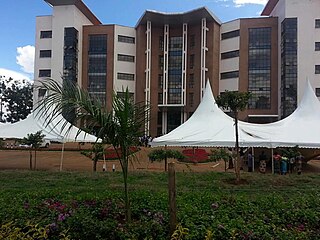
Chuka is a town on the eastern slopes of Mount Kenya, about 65 km south Of Meru Town. It falls within Tharaka-Nithi County and the former Eastern Province. Between 1992 and 2009, Chuka was the capital of Tharaka-Nithi District. Tharaka Nithi District was further split into Meru South and Tharaka Districts with Chuka remaining the Capital of Meru South. Later, Meru South and Tharaka were amalgamated into Tharaka-Nithi County.
Grass Koiari (Koiali) is a Papuan language of Papua New Guinea spoken in the inland Port Moresby area. It is not very close to the other language which shares its name, Mountain Koiali. It is considered a threatened language.

Sub-counties, formerly known as Districts, are the decentralised units through which government of Kenya provides functions and services. At national level, sub-counties take a more administrative function like security, statistical purposes, provision of government services, etc. Even though the sub-counties are divisions of counties, powers to create new national sub-counties lies with the national government. As of 2023, there are 314 sub-counties, compared to 290 constituencies. A deputy county commissioner is appointed by the state to lead each sub-county. The sub-counties are further divided into divisions, locations and sub-locations.

Chuka University is a public university in Kenya.
The Lumbwa were a pastoral community which inhabited southern Kenya and northern Tanzania. The term Lumbwa has variously referred to a Kalenjin-speaking community, portions of the Maa-speaking Loikop communities since the mid-19th century, and to the Kalenjin-speaking Kipsigis community for much of the late 19th to mid-20th centuries.
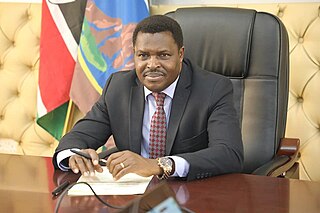
Njuki is a Kenyan politician. He is the second and Incumbent Governor of Tharaka Nithi County in Kenya after being re-elected on a UDA ticket in the 2022 Kenyan general election. Before being elected Governor, he served as the Chuka/Igambang'ombe Member of Parliament from 2013 to 2017.
The Murutu people were a community that, according to the oral literature of the Meru people of Kenya, inhabited regions of the Swahili coast and the Kenyan hinterland at various times in history.
Archibald Clive Irvine was a Scottish medical missionary to Kenya. He was an early proponent to stopping female circumcision. He worked primarily in Chogoria, Kenya, where he introduced coffee cultivation. He was the founder of the PCEA Chogoria Hospital and is the namesake of the Clive Irvine College of Health Sciences on the slopes of Mount Kenya. Clive also started the Chogoria Girls and Boys schools.
References
- ↑ Meru at Ethnologue (26th ed., 2023)

- ↑ Jouni Filip Maho, 2009. New Updated Guthrie List Online
- 1 2 Erastus, Fridah Kanana (2011). Meru Dialects: The Linguistic Evidence. In Nordic Journal of African Studies 20(4): Kenyatta University, Kenya. pp. 300–327.
{{cite book}}: CS1 maint: location (link) - ↑ "5 Steps to get you Writing Kimeru like a Njuri Ncheke Editor - The Ameru". The Ameru. 2017-11-08. Retrieved 2018-04-30.